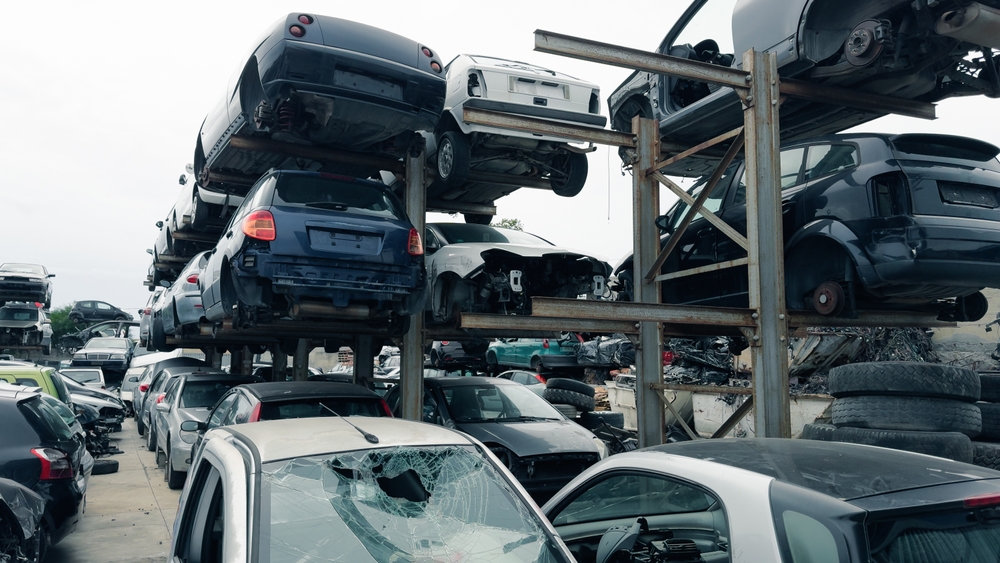When we think about recycling old cars, most people immediately picture piles of crushed metal waiting to be melted down and turned into something new. Steel and aluminum from junk cars are relatively easy to recycle as they go straight back into the production chain to build new vehicles, construction materials, or appliances. But there’s a hidden challenge that doesn’t always make the headlines: plastic.
From bumpers and dashboards to wiring covers and fuel tanks, modern cars are loaded with plastic components. While plastics make cars lighter, safer, and more fuel-efficient, they also bring a big recycling headache. Unlike metals, plastics are tricky to break down, sort, and reuse, especially when they’re designed to be tough, heat-resistant, and long-lasting.
So, why exactly are car plastics such a challenge for recyclers? Let’s dive deeper.
The Rise of Plastics in Cars
A few decades ago, cars were heavier, bulkier, and mostly made of steel. Today, plastics make up about 50% of a car’s volume but only 10% of its weight.
That’s because automakers use lightweight plastics to improve fuel efficiency, meet emission standards, and add modern features. Think about it:
- Bumpers and body panels built from strong polypropylene to absorb impact.
- Dashboards and interior trims are often a mix of PVC, polyurethane, and ABS for durability and design.
- Wiring insulation and connectors made of heat-resistant plastics to handle high electric loads.
- Fuel tanks are increasingly plastic because they’re lighter and corrosion-proof compared to metal tanks.
- All of these components are essential but they’re not easy to recycle.
Why Car Plastics Are Hard to Recycle
Mixed Materials
Unlike a pure steel beam, car plastics are rarely just one type. They’re often blends of polymers, reinforced with glass fibers, or coated with paints and adhesives. Separating these materials is like trying to un-bake a cake, nearly impossible.
Durability by Design
Car plastics are designed to last through heat, cold, rain, and crashes. That toughness makes them resistant to breakdown during recycling. For example, the same strength that helps a bumper protect you in an accident also makes it hard to shred and reuse.
Contamination Issues
Plastics in cars are often coated with paints, foams, or chemicals. Recycling plants need clean input to produce usable recycled plastic, and contaminated plastics require extra processing which costs more.
Economic Challenges
Virgin (new) plastic is often cheaper than recycled plastic because oil prices drive costs. This means recycling plastic from cars isn’t always financially attractive for recyclers unless there are incentives.
The Role of Junk Car Removal
This is where junk car removal services come into play. When a car reaches the end of its life, professional recyclers step in to dismantle it responsibly. In cities like Sydney, car removal Sydney services not only tow away old vehicles but also ensure that reusable and recyclable parts don’t end up in landfills. Here’s what happens:
- Metals are stripped out and sent to smelters.
- Fluids like oil and coolant are safely disposed of.
Plastic parts are sorted like bumpers, dashboards, trims, and more. Some can be recycled into lower-grade products like plastic pallets, pipes, or insulation materials. Others may be repurposed, such as shredded for use in road construction materials.
Even if not all plastics can be perfectly recycled, proper junk car removal ensures that what can be reused doesn’t go to waste.
Innovations Giving Hope
While challenges remain, the auto recycling industry isn’t standing still. Several innovations are making progress:
- Advanced Sorting Technology – Using infrared and AI-based scanners to separate different plastic types.
- Chemical Recycling – Breaking down plastics into their base chemicals so they can be reused like virgin material.
- Design for Recycling – Automakers are starting to consider recycling at the design stage, using fewer mixed materials and labeling plastics for easier identification.
For example, some companies are experimenting with recycling old bumpers directly into new ones, creating a circular loop that cuts waste and costs.
Benefits of Responsible Car Removal
For car owners in Sydney, choosing professional car removal services has two main benefits:
- Financial Gain – You get instant cash for your old, unwanted car, no matter its condition. Instead of letting it rust in the driveway, you turn it into value.
- Environmental Impact – By using proper junk car removal, you make sure that recyclable materials including plastics, don’t end up polluting the environment.
It’s a win-win: you free up space, earn money, and contribute to a greener future.
Conclusion
From bumpers to dashboards, plastics make our cars lighter, stronger, and more efficient but they also make recycling more complicated. Unlike metals, which easily find their way back into new products, plastics often struggle to complete the recycling loop.
The good news? With better recycling technologies, responsible junk car removal services, and a collective push for greener practices, the plastics in today’s cars don’t have to be tomorrow’s waste.
So the next time you see an old car sitting unused, remember: it’s not just scrap. It’s a mix of valuable materials like metals and plastics alike waiting for a second life. And with the right approach, we can unlock that potential while protecting the environment.



